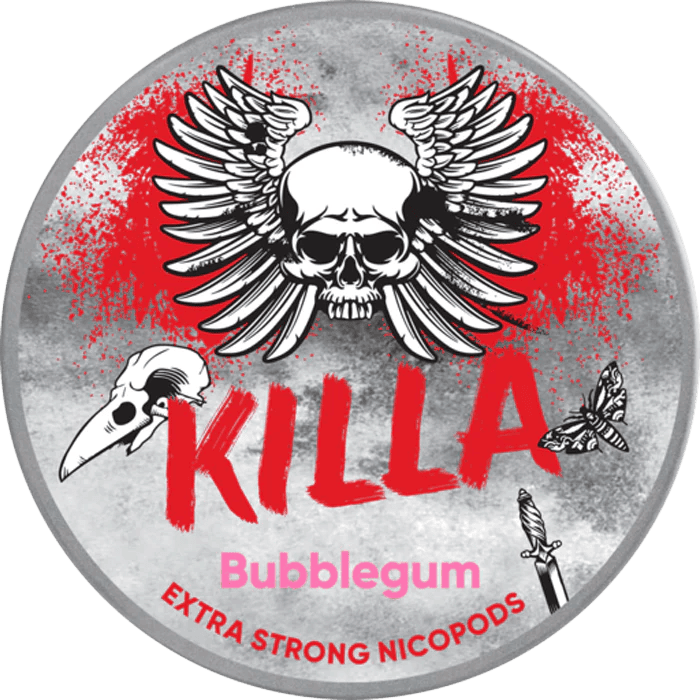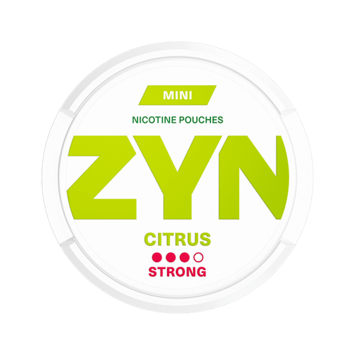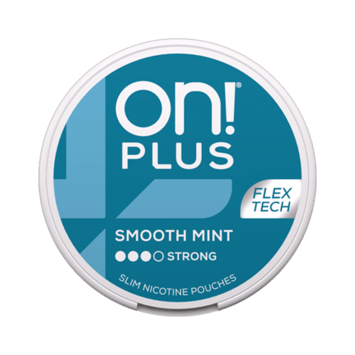Do nicotine pouches cause mouth cancer?
Philip Plainstein

Nicotine pouches, such as those offered by Zyn, On! and Velo, have gained significant popularity in the UK since their introduction in 2019. These small, chew-free sachets are placed between the gum and cheek, delivering a controlled amount of nicotine without the need for smoking or chewing. While they are marketed as a convenient alternative to traditional tobacco products, concerns have been raised about their potential health risks, particularly in relation to mouth cancer.
Although nicotine itself is not classified as a carcinogen, ongoing research is investigating whether these pouches might contribute to an increased risk of mouth cancer. Studies have shown that some nicotine pouches contain tobacco-specific nitrosamines (TSNAs), substances that are known to be carcinogenic. Additionally, the continuous exposure to nicotine and other ingredients in these products may lead to oral health issues, such as mouth sores, gum irritation, and inflammation.
Comparisons with traditional tobacco products and smokeless tobacco products highlight that nicotine pouches may carry different risks. While they do not produce smoke or tar like cigarettes, the high nicotine levels in some products, such as Zyn, have raised concerns about their potential impact on oral health. Furthermore, the lack of clear nicotine content labeling on many pouches adds to the uncertainty surrounding their safety.
Social media has played a significant role in the growing popularity of nicotine pouches among various demographics. However, it is crucial to understand both the benefits and risks associated with their use. This article will delve deeper into the mechanisms, usage, and regulatory landscape surrounding nicotine pouches, providing insights into their potential health effects, including oral health issues, as highlighted in recent research studies.
Understanding Nicotine Pouches
Nicotine pouches have become a popular alternative to traditional tobacco products, offering a discreet and convenient way to consume nicotine. These small sachets are designed to be placed between the gum and cheek, providing a controlled release of nicotine without the need for chewing or smoking.
Ingredients and Formulation
Each nicotine pouch typically contains a blend of nicotine, water, microcrystalline cellulose, flavourings, and sweeteners. The nicotine is the active ingredient, while the microcrystalline cellulose acts as a thickening agent to maintain the pouch’s structure. Flavourings and sweeteners enhance the taste, making the experience more pleasant for users. These ingredients are carefully formulated to ensure a smooth and discreet nicotine delivery.
Usage and Appeal
The appeal of nicotine pouches lies in their ease of use and variety of flavours. They are simply placed between the upper lip and gum, where the nicotine is absorbed through the mouth tissues. This method is particularly attractive to those looking for an alternative to cigarettes or other smokeless tobacco products. The absence of tobacco leaf in these pouches sets them apart from traditional options like snus or chewing tobacco, potentially reducing certain health risks. Additionally, the attractive packaging and diverse flavour options have drawn in a wide range of users, including younger demographics and existing smokers seeking a modern alternative.
For more information on nicotine pouches and their role in smoking cessation, visit WebMD.
Nicotine Delivery: Mechanism and Effects
Nicotine pouches function by releasing nicotine through a permeable substrate, allowing it to be absorbed via the oral mucosa. This method ensures a controlled release of nicotine into the bloodstream, providing users with a consistent dose without the need for chewing or smoking.
How Nicotine is Absorbed
The process begins when the pouch is placed between the gum and cheek. Nicotine diffuses through the pouch material and is absorbed by the mucous membranes in the mouth. This absorption happens quickly, with effects felt within minutes. The permeable material ensures a steady release, preventing sudden spikes in nicotine levels.
Compared to other delivery methods like gum or lozenges, nicotine pouches offer a more efficient absorption rate. They bypass the digestive system, delivering nicotine directly into the bloodstream. This results in faster effects and reduced risk of gastrointestinal side effects.
| Delivery Method | Absorption Speed | Peak Nicotine Levels | Duration of Effects |
|---|---|---|---|
| Nicotine Pouches | Fast (within 5-10 minutes) | Steady, sustained release | 20-30 minutes |
| Gum | Slow (10-15 minutes) | Variable, depends on chewing | 15-25 minutes |
| Lozenges | Fast (5-10 minutes) | Quick peak | 20-30 minutes |
The scientific consensus is clear: nicotine itself is not classified as a carcinogen. However, the delivery method plays a crucial role in determining potential health effects. Nicotine pouches are designed to minimize exposure to harmful substances, though some products may contain trace levels of tobacco-specific nitrosamines (TSNAs), which are known carcinogens.
When compared to smoking, nicotine pouches deliver nicotine without the tar and carbon monoxide found in cigarettes. This reduces the risk of respiratory diseases. However, the continuous use of nicotine can still lead to dependence and may contribute to oral health issues such as gum irritation or mouth sores.
The physical design of nicotine pouches, including their placement between the lip and gum, maximizes contact with the mucous membranes. This strategic placement ensures efficient absorption and minimizes the risk of swallowing the nicotine, which could lead to gastrointestinal discomfort.
While nicotine pouches are generally considered safer than smoking, they are not without risks. Users should be aware of the potential for nicotine dependence and monitor their oral health for any signs of irritation or unusual lesions. As with any nicotine product, moderation is key to minimizing adverse effects.
do nicotine pouches cause mouth cancer
Scientific studies have investigated whether nicotine pouches contribute to mouth cancer, yielding mixed results. While nicotine itself is not classified as a carcinogen, research suggests it may promote tumour development under certain conditions.
Review of Scientific Studies
A 2022 study analysed multiple nicotine pouch brands and detected trace levels of tobacco-specific nitrosamines (TSNAs) in some products. TSNAs are known carcinogens, raising concerns about potential cancer risks.
| Product Type | TSNA Presence | Cancer Risk |
|---|---|---|
| Nicotine Pouches | Trace levels in some | Uncertain, under investigation |
| Smokeless Tobacco | Higher levels | Established links to oral cancer |
Current research indicates that while nicotine pouches may pose some risk due to TSNAs, the overall cancer risk remains uncertain. Regulatory bodies are closely monitoring these findings, and further long-term studies are needed to fully understand the health implications.
Evaluating Health Risks and Side Effects
While nicotine pouches are often marketed as a safer alternative to smoking, they are not without risks. Understanding these potential health concerns is crucial for anyone considering their use.
Oral Health Concerns
Prolonged use of nicotine pouches can lead to several oral health issues. Gum irritation and mouth ulcers are common complaints, often resulting from the continuous presence of the pouch between the gum and cheek. Additionally, the high pH level of these products can cause oral inflammation. For more detailed information on how nicotine pouches affect your gums, visit our guide here.
These issues may worsen with long-term use, potentially leading to gum recession. Regular monitoring of your oral health is essential, and seeking medical advice if side effects persist is recommended.
Systemic Health Considerations
Beyond the mouth, nicotine pouches can have systemic effects. Nicotine absorption can increase heart rate and blood pressure, posing potential risks for cardiovascular health. While these effects are generally mild and short-term, they can be concerning for individuals with pre-existing heart conditions.
Compared to traditional smokeless tobacco products, nicotine pouches contain fewer harmful substances. However, they still carry risks, particularly due to the presence of tobacco-specific nitrosamines (TSNAs) in some products, which are known carcinogens.
It is important to weigh these risks against the benefits, especially for those using nicotine pouches as a smoking cessation tool.
Comparing Nicotine Pouches with Other Products
Nicotine pouches stand out as a distinct option in the nicotine delivery market, offering unique advantages over traditional methods. Their design and functionality set them apart from both nicotine replacement therapies (NRTs) and smokeless tobacco products.
Nicotine Replacement Therapies
Nicotine pouches differ significantly from conventional NRTs like patches, gum, and lozenges. Unlike gums and lozenges, which require active use, nicotine pouches are simply placed between the gum and cheek for a hands-free experience. This passive use enhances convenience, making them a preferred choice for many users.
In terms of nicotine delivery, pouches provide a steady release, avoiding the peaks associated with chewing gum. This consistent delivery can lead to higher user satisfaction. Studies suggest that nicotine pouches may be more effective than traditional NRTs in aiding smoking cessation, though more research is needed to confirm these findings.
Traditional Tobacco and Smokeless Alternatives
Compared to traditional smokeless tobacco products like snus or chewing tobacco, nicotine pouches lack tobacco leaves. This reduction in harmful chemicals lowers the risk of certain health issues. However, some pouches may contain trace tobacco-specific nitrosamines (TSNAs), which are known carcinogens, albeit at much lower levels than in traditional products.
The absence of tobacco in nicotine pouches appeals to those seeking to avoid traditional tobacco-related risks. Their sleek packaging and varied flavours attract a broader audience, including younger users and smokers looking for modern alternatives. This appeal has contributed to their rapid growth in popularity since their introduction.
| Product Type | Nicotine Delivery | Convenience | Health Risks |
|---|---|---|---|
| Nicotine Pouches | Steady, passive release | High (hands-free) | Lower than traditional tobacco |
| NRTs (Gum, Lozenges) | Variable, active use required | Lower than pouches | Generally safe but less effective |
| Smokeless Tobacco | Immediate, active use | Lower than pouches | Higher due to tobacco content |
For those considering nicotine pouches for smoking cessation, it’s essential to weigh their benefits against potential risks. While they offer a modern, convenient alternative, consulting healthcare professionals can provide personalized advice tailored to individual needs.
Learn more about how nicotine pouches work and their role in smoking cessation.
Regulatory Perspectives and Research Insights
As the popularity of nicotine pouches continues to grow, regulatory bodies and researchers are closely examining their impact on public health. In the UK, these products fall under the General Product Safety Regulations, distinct from traditional tobacco products. However, concerns persist regarding their potential risks and the need for stricter controls.
UK Regulatory Framework
The UK currently regulates nicotine pouches under the General Product Safety Regulations, treating them differently from tobacco products. This classification has led to discussions about whether additional controls are necessary. Action on Smoking and Health (ASH) has highlighted the absence of nicotine strength limits and age-of-sale restrictions as key areas needing attention. They also emphasize the need for tighter advertising controls to prevent targeting younger audiences.
Emerging Research and Trends
Recent studies have detected trace levels of tobacco-specific nitrosamines (TSNAs) in some nicotine pouches, raising concerns about potential health risks. While the cancer risk remains uncertain, these findings have sparked debates about the need for more stringent regulations. Ongoing research is not only shaping policy discussions but also influencing clinical advice on the safety of these products.
Comparisons with e-cigarettes reveal a more lenient regulatory approach for nicotine pouches, despite similar concerns about youth appeal and nicotine exposure. This disparity has led to calls for a more uniform regulatory framework that addresses the unique aspects of nicotine pouches while protecting public health.
As regulatory bodies and researchers continue to investigate, consumers must remain informed about both current practices and future challenges. Staying updated on regulatory changes and research findings will be crucial for making informed decisions about nicotine pouch use.
In conclusion, while nicotine pouches offer a modern alternative to traditional tobacco products, their regulatory and research landscape is evolving. As the UK considers tighter controls and further studies shed light on their safety, consumers and policymakers alike must stay vigilant to ensure these products are used responsibly and with full awareness of their potential risks.
Final Reflections on Dental Health and Nicotine Use
In reflecting on the relationship between nicotine pouches and dental health, it’s clear that while they offer certain advantages over traditional tobacco products, caution is still necessary.
The scientific evidence suggests that nicotine itself is not a carcinogen, but some pouches contain trace levels of tobacco-specific nitrosamines (TSNAs), which are known carcinogens. This has raised concerns about potential long-term health risks, particularly for oral health.
While nicotine pouches are generally considered a safer alternative to smoking, they are not without risks. Users should be aware of the potential for gum irritation and oral inflammation, which can arise from prolonged use.
Compared to other nicotine products, such as smokeless tobacco, nicotine pouches may carry different risks. However, it’s important to note that they lack tobacco leaves, which can reduce certain health risks associated with traditional tobacco products.
As regulatory bodies continue to monitor these products, it’s essential for consumers to stay informed about ongoing research and potential changes in product regulation. Consulting healthcare professionals can provide personalized advice for those considering nicotine pouches as a smoking cessation tool.
In conclusion, while nicotine pouches offer a modern alternative to traditional tobacco products, their impact on dental and overall health requires careful consideration. Staying vigilant and informed will help ensure responsible use and awareness of potential risks.









